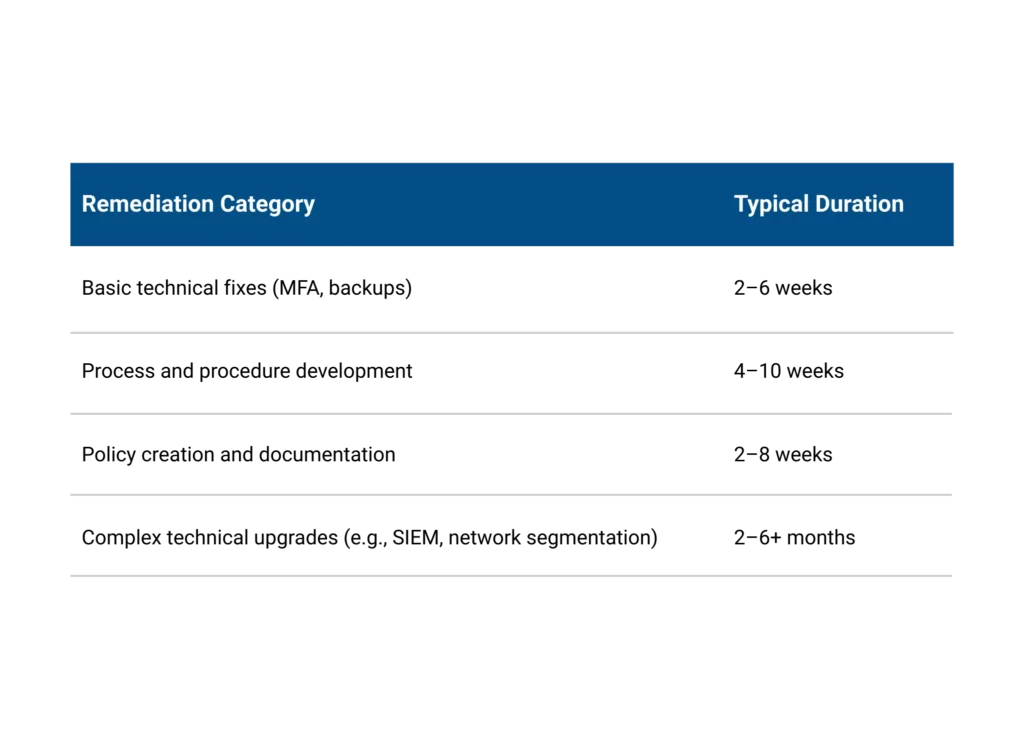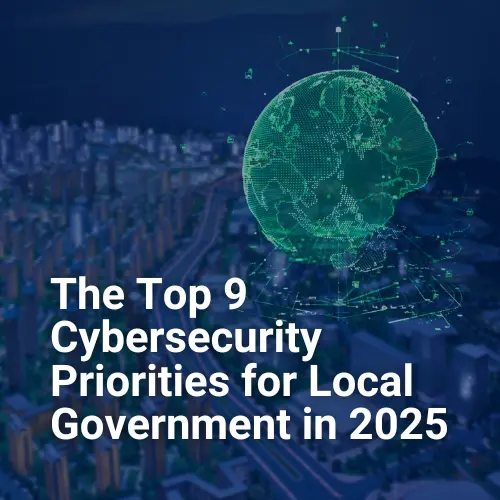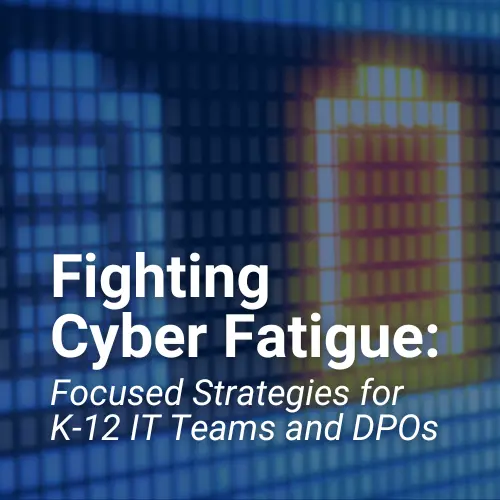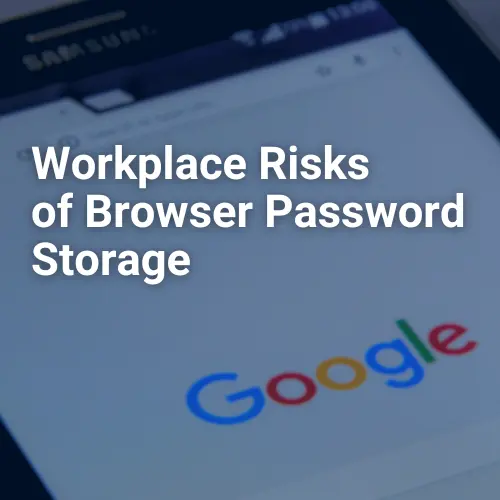If your organization handles Federal Contract Information (FCI) or Controlled Unclassified Information (CUI) as part of a Department of Defense (DoD) contract—or plans to—it’s not a question of if you need to become CMMC 2.0 compliant, but when. The Cybersecurity Maturity Model Certification (CMMC) Program Final Rule was published, and compliance is quickly becoming a prerequisite for winning and maintaining DoD business.
At first glance, the road to compliance can seem unclear, especially when it comes to understanding how long it actually takes. The answer, as you might expect, isn’t one-size-fits-all. Your starting point, target CMMC level, current cybersecurity posture, available resources, and the complexity of your environment all contribute to determining the duration of your journey.
As a managed IT and cybersecurity services provider that works closely with small to mid-sized organizations across regulated industries, we’ve seen a wide range of scenarios. If you’re a DoD contractor aiming to achieve CMMC Level 1 or 2 compliance, this post is for you. Our goal is straightforward: to break down what CMMC compliance truly entails, the factors that impact your timeline, and how you can begin building a clear, practical plan today.
As you will see, becoming CMMC 2.0 compliant isn’t just about passing an audit. It’s about building a security program that protects your business and your clients, now and into the future.
What Influences the Duration of a CMMC Compliance Journey?
Every organization seeking compliance—also known as an Organization Seeking Certification (OSC)—wants to know: how long will this take? The answer depends on multiple factors, each of which contributes to the scope, complexity, and pace of your compliance efforts.
Below are the primary factors that influence how long it takes to achieve CMMC 2.0 compliance:
The CMMC Level You’re Pursuing
- Level 1 (Foundational) focuses on the basic safeguarding of FCI, and OSCs can achieve certification through a self-assessment.
- Level 2 (Advanced) involves 110 NIST SP 800-171 controls and requires a third-party assessment by a Certified Third-Party Assessor Organization (C3PAO).
Higher levels mean more controls, more documentation, more technical and procedural alignment, and naturally, more time.
Your Current Cybersecurity Maturity
Organizations with mature cybersecurity programs, existing documentation, and clearly defined policies may need less time for remediation. On the other hand, if your environment lacks formalized security practices, be prepared for a longer and more involved process that includes foundational work, such as policy creation, technical control implementation, and process development.
Documentation Readiness
CMMC is as much about showing your work as it is about doing the work. This statement is especially true for Levels 2, for which you’ll need a System Security Plan (SSP), a Plan of Action & Milestones (POA&M), and supporting documentation for each control. If this documentation doesn’t already exist, or is incomplete or outdated, creating it can take substantial time and collaboration.
Internal Resources and Bandwidth
The size and experience of your internal IT and compliance teams directly impact how quickly you can move through assessments, gap remediation, and evidence collection. Organizations that lack internal bandwidth often benefit from engaging an experienced cybersecurity partner to help guide and expedite the process.
Budget and Decision-Making Timeline
Compliance is not a switch you flip. It requires investments in technology, training, process changes, and sometimes infrastructure upgrades. Lengthy procurement cycles, budgeting constraints, or delays in executive decision-making can delay timelines.
Complexity of Your IT Environment
A single-location business with standardized systems will likely move through the process faster than a multi-site organization with legacy infrastructure, third-party integrations, or custom applications. More endpoints, users, and systems typically equal more work and more time.
Engagement with Third Parties (Assessors, Consultants, etc.)
Engaging a C3PAO is essential for Level 2 certification. That said, assessment availability and scheduling windows may also affect your timeline. Additionally, if you’re working with consultants or MSSPs to close gaps or build your compliance program, their availability and engagement model will impact how quickly you can progress.
Understanding these variables early helps set realistic expectations and avoid costly delays. Many organizations underestimate the lead time required to prepare for an assessment, particularly for Level 2, which demands comprehensive documentation and formal control implementation.
The key takeaway? Start now. Even if you’re months away from a contract requiring CMMC compliance, early action gives your team time to plan, build, test, and validate your cybersecurity program in a sustainable way.
No matter your level, preparation is key. Organizations that wait until CMMC requirements appear in a contract are already behind. Getting ahead of the curve now not only positions your business competitively but also gives you the time and space to build a sustainable cybersecurity program, avoid rushed decisions, and strengthen your long-term posture.
In the next section, we’ll break down each phase of the compliance journey, allowing you to plan your project timeline with confidence.
Phase 1: CMMC Gap Analysis
The first step toward CMMC compliance is understanding your current status and the distance you have to cover. That’s where a Gap Analysis comes in.
You can think of the Gap Analysis as the foundation of your compliance roadmap. This structured assessment compares your current cybersecurity controls, processes, and documentation against the full set of requirements for your target CMMC level.
What Happens During a Gap Analysis?
Control-by-Control Evaluation
A cybersecurity professional will walk through each required control (e.g., the 110 controls in NIST SP 800-171 for Level 2) to determine whether it’s fully implemented, partially implemented, or missing entirely.
Policy and Procedure Review
Beyond technical tools, the analysis also reviews your security documentation, like access control policies, incident response plans, and user training materials, to determine whether they exist, are up to date, and align with CMMC requirements.
Interviews and Evidence Collection
IT staff, department leads, and key stakeholders may be interviewed to verify how processes work in practice and whether those practices are formally documented.
Why the CMMC Compliance Gap Analysis Matters
The Gap Analysis forms the basis for every step that follows. It:
- Identifies missing or weak controls
- Highlights documentation deficiencies
- Prioritizes remediation activities based on risk and resource requirements
- Helps estimate timelines, costs, and resource needs for compliance
How Long Does a CMMC Compliance Gap Analysis Take?
For most small to mid-sized organizations, a comprehensive CMMC Level 2 Gap Analysis typically takes between 2 and 6 weeks to complete. The timeline depends on factors such as the size and complexity of the environment, as well as the ease with which information can be gathered. A Level 1 analysis—focused on fewer controls—generally falls on the shorter end of that range. Partnering with an experienced compliance provider can help streamline the process at any level.
The sooner you complete a Gap Analysis, the better. It equips leaders with the insights needed to make informed decisions, allocate resources effectively, and align organizational priorities for compliance.
Phase 2: Structured Planning and Documentation Based on Gap Analysis Findings
After completing your Gap Analysis, the next step is to use those findings to develop structured documentation that will guide your path to full compliance. While CMMC Level 1 self-assessments do not formally require an SSP or a POA&M, these documents—or their streamlined equivalents—can be invaluable tools for organizations seeking to efficiently and effectively close identified gaps.
For CMMC Level 2, the SSP and POA&M are crucial. The SSP outlines your current cybersecurity practices, system boundaries, and how each control requirement is being met. The POA&M identifies any deficiencies and lays out a timeline and action plan for remediation.
Although OSCs at Level 1 must already meet all applicable controls at the time of self-assessment, developing an internal action plan based on gap analysis results can help ensure no requirements are overlooked and provide leadership with a clear roadmap for budgeting, task ownership, and accountability. Even a simplified SSP can help maintain visibility into the policies and practices that are in place, serving as valuable reference documentation during audits, leadership transitions, or future compliance efforts.
Ultimately, while not mandated, adopting a formalized planning approach demonstrates a proactive cybersecurity posture and sets your organization up for long-term success.
System Security Plan (SSP)
The SSP is a living document that describes your organization’s information system and how you’ve implemented each of the required cybersecurity controls.
Your SSP should include:
- A description of your system boundaries, architecture, and components
- Details of each control’s implementation status
- Roles and responsibilities for maintaining security practices
- Descriptions of policies, procedures, and technologies in place
Think of your SSP as the “playbook” for your cybersecurity environment. It must be detailed, accurate, and aligned with the real-world practices and tools you use to protect FCI and CUI.
Plan of Action & Milestones (POA&M)
The POA&M is a structured plan to address any gaps or deficiencies uncovered during your Gap Analysis.
Your POA&M outlines:
- What controls are not yet fully implemented
- Why they’re not compliant
- The steps your organization will take to correct them
- Assigned owners and deadlines for completion
The POA&M is critical for CMMC Level 2, as assessors will expect to see evidence of ongoing remediation work. While you’ll need to close out most items before a formal assessment, having a well-organized and active POA&M shows that your organization is serious about closing gaps and tracking progress over time.
Why Your SSP and POA&M Matter
Your SSP and POA&M are foundational to your compliance posture. They provide transparency into your cybersecurity program and serve as the lens through which assessors evaluate your readiness.
Even if you’re not ready for a full assessment today, creating these documents early gives your team a clear and actionable roadmap. They also:
- Establish ownership and accountability for compliance efforts
- Help with budgeting and resource planning
- Support internal audits and policy development
- Allow for continuous improvement over time
How Long Does It Take to Develop an SSP and POA&M?
Developing a thorough, audit-ready SSP and POA&M typically takes 4 to 8 weeks, depending on the quality of your existing documentation and the number of gaps that need to be addressed. If your organization is starting from scratch, plan for the higher end of that range. Or, consider engaging a partner who can help accelerate the process with templates, best practices, and expert guidance.
Phase 3: Remediation and Control Implementation
With your gap analysis complete and your SSP and POA&M—or equivalent roadmap—in place, it’s time to move from planning to execution. This phase, remediation and control implementation, is often the most time- and resource-intensive part of the journey, but also where the most meaningful security improvements are made.
This phase is where your organization closes the gaps, strengthens its cybersecurity posture, and lays the groundwork for both compliance and long-term resilience.
What Does Remediation Involve?
Remediation work will look different depending on your organization’s existing maturity, but it typically involves:
Technical Control Implementation
Installing or configuring security solutions such as multi-factor authentication (MFA), endpoint detection and response (EDR), log management, data encryption, and secure backups.
Process Improvements
Establishing or refining security-related processes such as incident response, user access provisioning, and system monitoring.
Policy and Documentation Development
Writing or updating policies to ensure they accurately reflect your cybersecurity practices and align with CMMC requirements.
Security Awareness and Training
Ensuring all personnel, from end users to system admins, are trained on security best practices, internal policies, and how to identify potential threats.
Role-Based Access Control and System Hardening
Aligning system permissions with job responsibilities and minimizing exposure by disabling unused services, ports, and default accounts.
Collaborating Across Teams
Remediation isn’t just an IT project; it’s an organization-wide initiative. Compliance requires input from technical and non-technical stakeholders alike. In most cases, successful implementation involves:
- IT and cybersecurity teams working hands-on with systems and tools
- Operations and HR contributing to processes like onboarding, offboarding, and employee training
- Leadership and finance allocating budget and supporting necessary changes
- External partners or MSPs/MSSPs providing technical expertise, tools, or ongoing support
Don’t underestimate the change management aspect. Even the most effective technical solutions can fall short if they aren’t supported by well-communicated processes, leadership buy-in, and user awareness.
Prioritizing Controls Based on Risk
Not every control needs to be implemented at once. An experienced compliance partner can help prioritize remediation based on risk, complexity, and impact. Some controls, like enabling MFA or setting up secure audit logs, may be low-hanging fruit with high returns. Others, such as implementing a fully mature vulnerability management program, may require more time and investment.
Using your POA&M as a guide, remediation work can be broken into manageable phases to avoid overloading teams and to demonstrate steady progress.
How Long Does Remediation Take?
Remediation timelines vary widely depending on the number and complexity of gaps, but here’s a general breakdown:
Remediation Category and Typical Duration
- Basic technical fixes (MFA, backups): 2–6 weeks
- Process and procedure development: 4–10 weeks
- Policy creation and documentation: 2–8 weeks
- Complex technical upgrades (e.g., SIEM, network segmentation): 2–6+ months
For most organizations, this phase typically spans anywhere from 3 to 12 months, with parallel workstreams running across IT, policy, training, and vendor support. Of course, you must also factor in the duration-influencing variable mentioned at the start of this article. But, starting early and allocating dedicated time and resources can dramatically reduce delays and prevent fire-drill scenarios as contract requirements approach.
Key Takeaways on the Remediation Phase
- This is the “do the work” phase: It’s where planning becomes action and cybersecurity posture is measurably improved.
- Prioritize based on impact and feasibility: Focus on high-risk or easily addressable items first to build momentum.
- Document everything: Implementation without documentation won’t pass a CMMC audit. Track changes, updates, and decision-making as you go.
- Use your SSP and POA&M as living tools: Regularly update both documents to reflect new implementations, status changes, and control ownership.
Phase 4: CMMC Readiness Assessment
Before engaging a C3PAO for a formal Level 2 assessment or submitting a self-assessment for Level 1, it’s critical to confirm that your organization is truly ready. That’s the purpose of the CMMC Readiness Assessment.
This internal (or partner-led) evaluation simulates the formal audit process to validate that your implemented controls, documentation, and evidence align with CMMC requirements.
What Happens During a Readiness Assessment?
The process is typically conducted by an internal cybersecurity leader or a trusted third-party expert familiar with the CMMC framework. It includes:
Evidence Review
Evaluators review artifacts like screenshots, audit logs, user permissions, policy documents, and system configurations to ensure each control is not only implemented but also verifiable.
Interviewing Key Personnel
Assessors will ask staff questions to confirm understanding and consistency with documented processes. This tests both institutional knowledge and organizational maturity.
Mock Audit Walk-Throughs
Walking through the SSP, POA&M, and selected controls in the format used by C3PAOs auditors helps ensure you’re prepared for the structure and rigor of a real assessment.
Control Scoring or Rating
Many readiness assessments will score your controls as “Met,” “Not Met,” or “Partially Met” using the NIST SP 800-171A assessment methodology, helping identify final areas for refinement.
Why the CMMC Readiness Assessment Matters
Failing a formal CMMC Level 2 assessment can result in lost contract opportunities and necessitate restarting the process. A readiness assessment minimizes those risks by ensuring:
- Controls are fully implemented and operational
- Supporting evidence is clear, accessible, and audit-ready
- Teams know what to expect and how to respond during an audit
- The organization is aligned on roles and responsibilities during the review
It’s also an opportunity to identify any last-minute gaps, clarify inconsistencies in documentation, and reinforce a culture of security and compliance before the real test begins.
How Long Does a CMMC Readiness Assessment Take?
A readiness assessment can typically be completed in 2 to 4 weeks, depending on the size of the environment and the number of stakeholders involved. Larger organizations, or those with highly customized environments, may require more time to review controls and compile audit artifacts.
OSCs with Level 2 should schedule their readiness assessment well in advance of any anticipated contract deadlines. For instance, many C3PAOs are booked months in advance, and delays due to failed assessments can significantly impact your timeline.
Phase 5: Maintaining CMMC Compliance with a Governance, Risk & Compliance (GRC) Program
Achieving CMMC compliance is a major milestone, but it’s not the end of the journey.
The final phase of the CMMC lifecycle is about maintaining compliance over time through a proactive Governance, Risk, and Compliance (GRC) program. This ensures your security posture remains strong, your documentation stays current, and your organization is always prepared for reassessments, audits, and emerging threats.
Why Maintenance Matters
Unlike one-and-done checklists, CMMC 2.0 emphasizes ongoing maturity and improvement. If your organization treats compliance as a one-time project, you risk falling out of alignment quickly due to:
- Personnel turnover
- System upgrades or network changes
- New regulatory updates or evolving contract requirements
- Drift in user behavior or process consistency
A robust GRC program enables you to stay ahead by integrating cybersecurity into your day-to-day operations.
Key Elements of an Effective GRC Program for CMMC
- Control monitoring and reviews: Regularly confirm that security controls remain effective and aligned with the SSP.
- Policy and documentation updates: Keep documents like your SSP, POA&M, and IR plan current with system and organizational changes.
- Training and awareness: Conduct regular training sessions to ensure staff remain informed about policies, threats, and procedures.
- Vulnerability and risk assessments: Proactively scan for weaknesses and manage new risks through risk registers and formal reviews.
- Incident response and logging: Maintain logging infrastructure, test your IR plan, and log and learn from security events.
- Annual self-assessments or pre-assessments: Even if you’re not undergoing a formal reassessment, regularly evaluating your own controls prepares you for surprise audits or renewals.
- Partner support or vCISO services: Many organizations work with a Managed Security Services Provider (MSSP) or virtual CISO to manage ongoing compliance and security oversight cost-effectively.
How Long does CMMC GRC Take?
GRC is not a time-bound phase. It’s a continuous effort that becomes part of your organization’s operating rhythm. For small to mid-sized organizations, a sustainable GRC program typically involves:
- Quarterly check-ins or reviews
- Annual documentation refresh cycles
- Ongoing security operations support (via internal staff or outsourced partners)
Establishing these routines early helps you stay compliant, reduces future assessment costs, and, most importantly, enhances your ability to safeguard FCI and CUI on a daily basis.
The most secure and successful organizations treat CMMC not as a destination, but as a framework for ongoing improvement. It’s seen as a way to reduce risk, enable growth, and protect what matters most.
Best Advice for CMMC Compliance: Start Early, Stay Ahead
Achieving CMMC compliance is a significant undertaking, but it’s also a meaningful investment in your organization’s future. Whether you’re seeking to win or retain DoD contracts, protect CUI, or strengthen your overall cybersecurity posture, the journey to compliance delivers long-term value far beyond the assessment itself.
But here’s the key: the sooner you start, the better positioned you’ll be.
With the CMMC Final Rule now live and DoD contracts expected to begin to incorporate requirements into solicitations, the window to prepare is closing quickly. Delaying your efforts can mean losing out on business, scrambling under pressure, or worse, failing an audit when it counts most.
The most successful organizations don’t wait until they’re forced to act. They build compliance into their culture, treat cybersecurity as a business enabler, and partner with experts who can guide them confidently through the process.
Get Prepared for Your CMMC Assessment
At M.A. Polce, we specialize in helping small to mid-sized organizations navigate the path to CMMC compliance with clarity, confidence, and control. Whether you’re just getting started or working through complex remediation and readiness phases, our team is here to support your goals at any stage with:
- Gap assessments and documentation support
- Technical and policy remediation
- vCISO guidance and audit readiness
- Ongoing compliance monitoring and GRC program development
Don’t wait until the CMMC deadline is on your doorstep. Let’s start a conversation about where you are, where you need to go, and how we can help you get there, on time and with peace of mind.
Visit our CMMC compliance page to learn more, or contact us to schedule a free consultation and discover how we can support your CMMC compliance journey.




